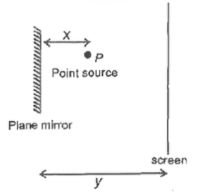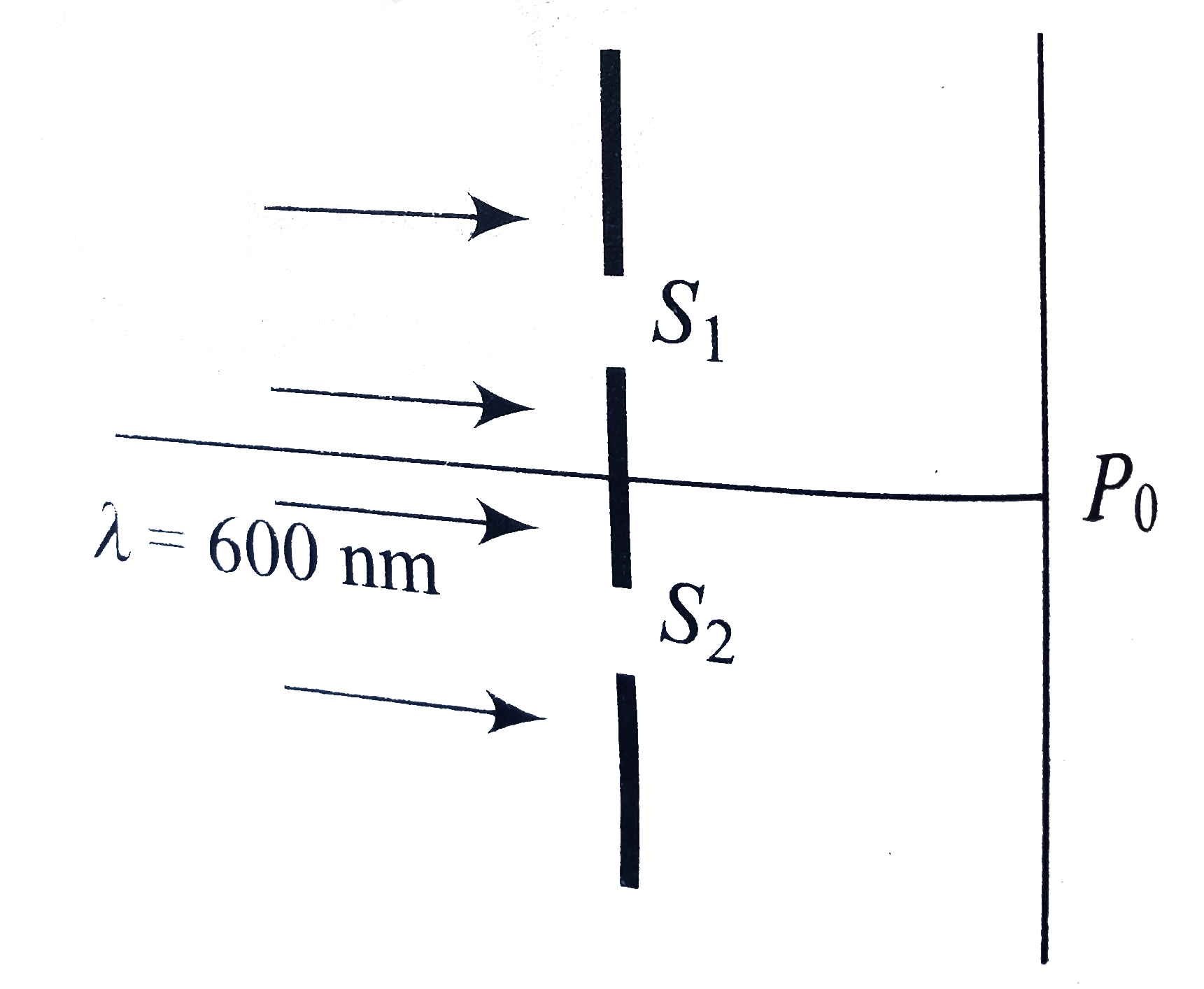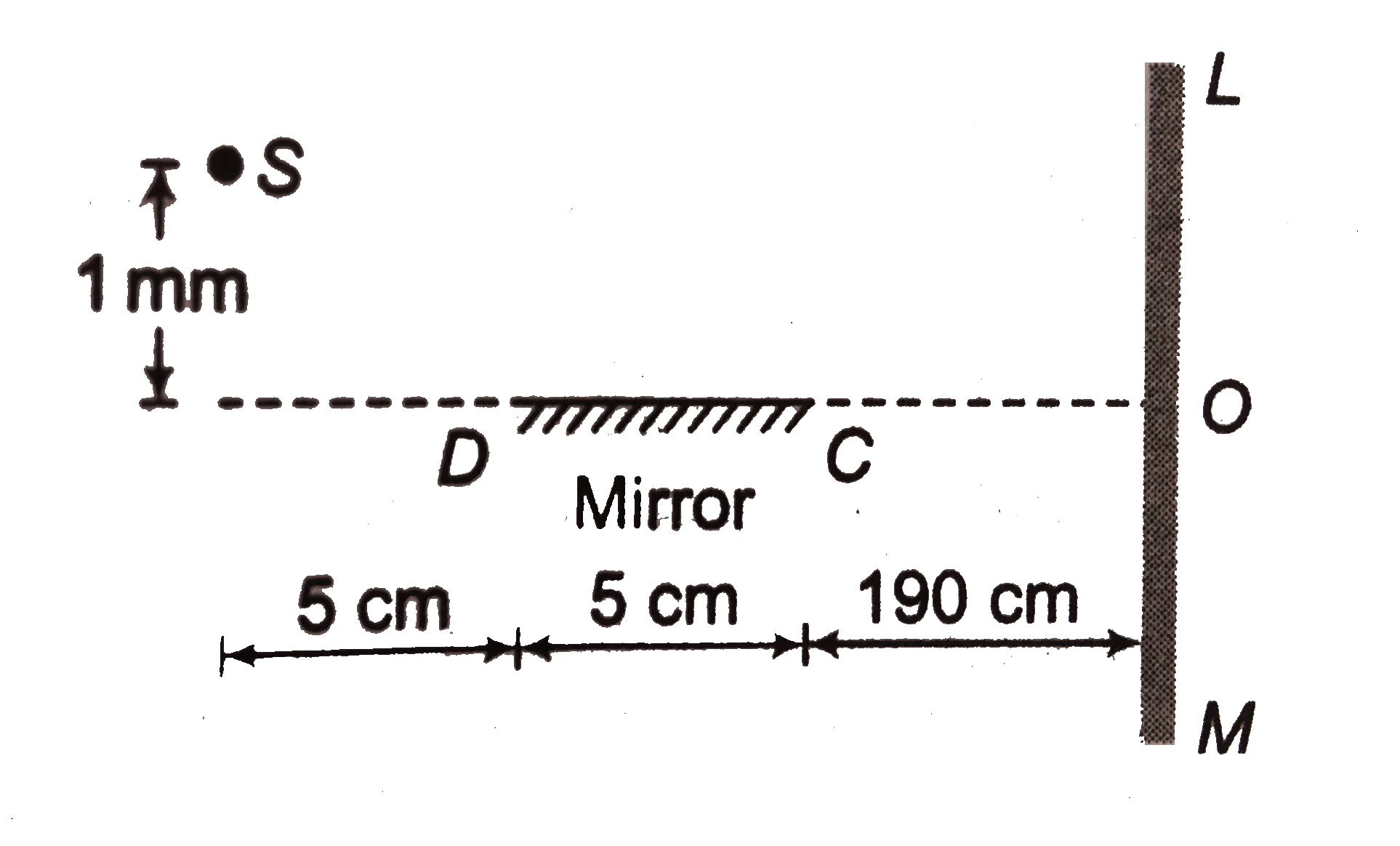Assertion: A glass hemisphere is placed on a flat plate as shown. The observed interference fringes from this combination shall be circular.
Reason: In all cases fringes are circular.
(a)If both Assertion and Reason are true and the Reason is correct explanation of the Assertion.
(b)If both Assertion and Reason are true and the Reason is not the correct explanation of the Assertion.
(c) If Assertion is true, but the Reason is false.
(d) If Assertion is false, but the Reason is true.
The correct Answer is:C
To solve the question regarding the assertion and reason provided, we will analyze both statements step by step.
Step 1: Analyze the Assertion
The assertion states that "A glass hemisphere is placed on a flat plate as shown. The observed interference fringes from this combination shall be circular."
- Explanation: When a glass hemisphere is placed on a flat plate, light waves reflecting from the bottom surface of the hemisphere and the flat plate will interfere with each other. The curvature of the hemisphere causes the path difference between the rays to vary in a circular manner. Therefore, the interference pattern observed will indeed be circular.
Step 2: Analyze the Reason
The reason states that "In all cases, fringes are circular."
- Explanation: This statement is not true. While certain configurations, such as the one involving a glass hemisphere on a flat plate, can produce circular fringes, there are many other configurations (like straight edge diffraction or other geometries) that can produce fringes that are linear or conical. Thus, this reason does not hold universally.
Conclusion
- The assertion is true because the interference fringes from the glass hemisphere on a flat plate are indeed circular.
- The reason is false because it incorrectly generalizes that all interference fringes are circular.
Final Answer
The assertion is true, but the reason is false. Therefore, the correct answer is option C.
---
The assertion states that "A glass hemisphere is placed on a flat plate as shown. The observed interference fringes from this combination shall be circular."
The reason states that "In all cases, fringes are circular."
- The assertion is true because the interference fringes from the glass hemisphere on a flat plate are indeed circular.
- The reason is false because it incorrectly generalizes that all interference fringes are circular.
The assertion is true, but the reason is false. Therefore, the correct answer is option C.
Topper's Solved these Questions
- BOOK - DC PANDEY ENGLISHCHAPTER - INTERFERENCE AND DIFFRACTION OF LIGHTEXERCISE - Level 1 Objective11videos
INTERFERENCE AND DIFFRACTION OF LIGHT
- BOOK - DC PANDEY ENGLISHCHAPTER - INTERFERENCE AND DIFFRACTION OF LIGHTEXERCISE - Objective question2videos
INTERFERENCE AND DIFFRACTION OF LIGHT
- BOOK - DC PANDEY ENGLISHCHAPTER - INTERFERENCE AND DIFFRACTION OF LIGHTEXERCISE - Exercise 32.26videos
INTERFERENCE AND DIFFRACTION OF LIGHT
- BOOK - DC PANDEY ENGLISHCHAPTER - GRAVITATIONEXERCISE - All Questions135videos
GRAVITATION
- BOOK - DC PANDEY ENGLISHCHAPTER - MAGNETIC FIELD AND FORCESEXERCISE - Medical entrance s gallery59videos
MAGNETIC FIELD AND FORCES
Similar Questions
A thin slice is cut out of a glass cylinder along a plane parallel to its axis. The slice is placed on a flat glass plate as shown in Figure. The observed interference fringes from this combination shall be
 View Solution
View SolutionA thin slice is cut out of a glass cylinder along a plane parallel to its axis. The slice is placed on a flat glass plate with the curved surface downwards. Monochromatic light is incident normally from the top. The observed interference fringes from the combination do not follow on of the following statements.
View Solution
Knowledge Check
- Question 1 - Select One
Assertion : When a thin transparent sheet is placed in front of both the slits of Young's experiment, the fringe width will remains same.
Reason : In Young's experiment, the fringe width is directly proportional to wavelength of the source used.AIf both assertion and reason are true and reason is the correct explanation of assertion.BIf both assertion and reason are true but reason is not the correct explanation of assertion.CIf assertion is true but reason is false.DIf both assertion and reason are false. - Question 2 - Select One
Assertion : The fringe closest on either side of the central white fringe in case of interference pattern due to white light is red and the farthest appears blue.
Reason : The interference patterns due to different component colours of white light overlap.AIf both assertion and reason are true and reason is the correct explanation of assertion.BIf both assertion and reason are true but reason is not the correct explanation of assertion.CIf assertion is true but reason is false.DIf both assertion and reason are false.
Shape of interference fringes formed on the screen due to point source P, in the case shown here
 View Solution
View SolutionAssertion: if a glass slab is placed in front of one of the slits, then fringe with will decreases.
Reason: Glass slab with produce an additional path difference.View SolutionAssertion: A monochromatic source of light is placed above a plane mirror as shown in figure. Fringes will be obtained at all points above O but not below it on the screen.
Reason: All reflected rays will suffer a phase difference of π.View SolutionAssertion A flexeble wire loop of irregular shape carrying current when placed in a uniform external magnetic field acquires a circular shape.
Reason For a given perimeter circular shape is having the greatert area.View SolutionIn a standard Young's double-slit experiment with coherent light of wavelength 600 nm, the fringe width of the fringes in the central region (near the central fringe, P0) is observed it to be 3 mm. An extremely thin glass plate is introduced to be displaced by 11 mm. Another thin plate is placed before the second slit and it is observed that the fringe are now displaced by an additional 12 mm. If the additional optical path lengths introduced are Δ1 and Δ2 then
 View Solution
View SolutionA source of light of wavelength 5000Å is placed as shown in figure.
Considering interference of direct and reflected rays, determine the position of the
region where the fringes will be visible and calculate the number of fringes.
 .View Solution
.View Solution

